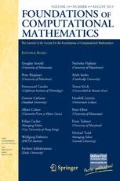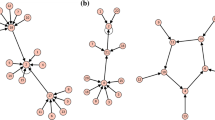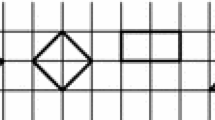Abstract
We give a new, simple, dimension-independent definition of the serendipity finite element family. The shape functions are the span of all monomials which are linear in at least s−r of the variables where s is the degree of the monomial or, equivalently, whose superlinear degree (total degree with respect to variables entering at least quadratically) is at most r. The degrees of freedom are given by moments of degree at most r−2d on each face of dimension d. We establish unisolvence and a geometric decomposition of the space.
Similar content being viewed by others
References
T.J.R. Hughes, The Finite Element Method (Englewood Cliffs, Prentice-Hall, 1987). Linear static and dynamic finite element analysis, with the collaboration of Robert M. Ferencz and Arthur M. Raefsky.
V.N. Kaliakin, Introduction to Approximate Solution Techniques, Numerical Modeling, & Finite Element Methods (CRC Press, Boca Raton, 2001). Civil and Environmental Engineering.
J. Mandel, Iterative solvers by substructuring for the p-version finite element method, Comput. Methods Appl. Mech. Eng. 80(1–3), 117–128 (1990). Spectral and high order methods for partial differential equations (Como, 1989).
G. Strang, G.J. Fix, An analysis of the finite element method, in Prentice-Hall Series in Automatic Computation (Prentice-Hall, Englewood Cliffs, 1973).
B. Szabó, I. Babuška, Finite Element Analysis (Wiley-Interscience, New York, 1991).
O.C. Zinkiewicz, R.L. Taylor, J.Z. Zhu, The Finite Element Method: Its Basis and Fundamentals, 6th edn., vol. 1 (Butterworth, Stoneham, 2005).
Author information
Authors and Affiliations
Corresponding author
Additional information
Communicated by Philippe Ciarlet.
The work of D.N. Arnold was supported in part by NSF grant DMS-0713568.
The work of G. Awanou was supported in part by NSF grant DMS-0811052 and the Sloan Foundation.
Rights and permissions
About this article
Cite this article
Arnold, D.N., Awanou, G. The Serendipity Family of Finite Elements. Found Comput Math 11, 337–344 (2011). https://doi.org/10.1007/s10208-011-9087-3
Received:
Accepted:
Published:
Issue Date:
DOI: https://doi.org/10.1007/s10208-011-9087-3




